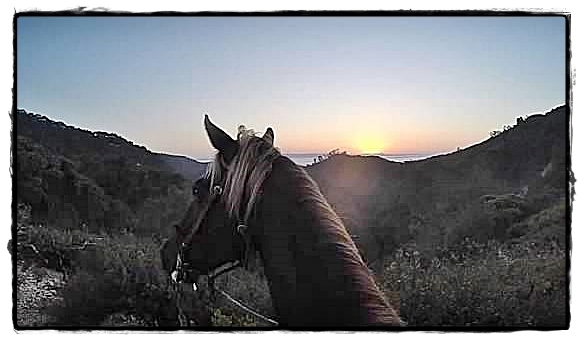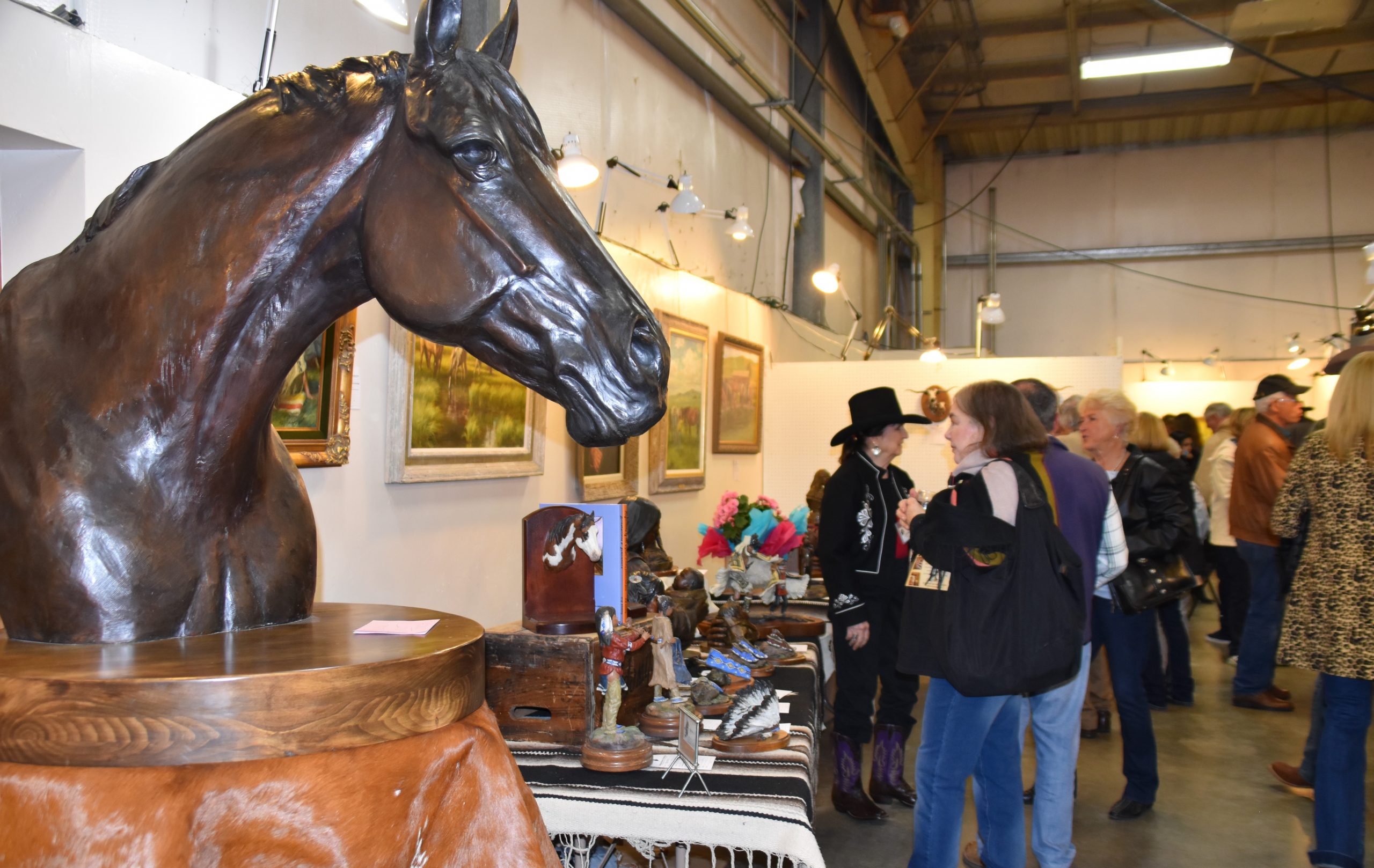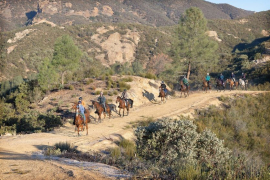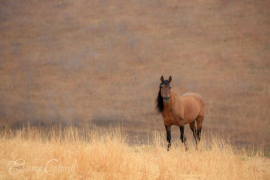What event showcases 50 miles of beautiful, non-public access trails over natural terrain, has 1200 race runners served by 300 volunteers – including 13 horseback riders, many mountain bikers and 4×4 vheicles – and is held over one beautiful weekend in Avila beach? The SLO Ultra at Wild Cherry Canyon.
“The runners enjoyed seeing the horses. Many approached us to pet the horses and take selfies with them,” expressed Kathy Redden organizer of the equestrian group for the weekend.
This was the inaugural SLO Ultra race and as a brand new event the race organizer Samantha Pruitt was looking to get more people involved and provide a new experience for trail runners. When Samantha approached Kathy about organizing an equestrian group the first question was, “What are the equestrians going to do?”
How the Equestrians Assisted Runners
The answer was provided by the participating equestrians themselves.
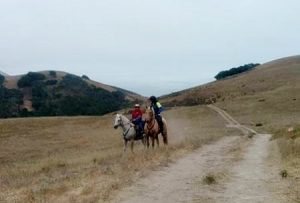
“The horseback riders gave directions, alerted first-aid stations to check out certain runners, gave the runners something new to focus on, cheered on runners, and even chased down a couple of rogue runners,” explained Kathy.
She personally witnessed many runners relaxing as they enjoyed interacting with the horses and taking selfies.
“We provided enthusiasm and support as we cheered on the runners. It was really pretty special,” added Kathy.
Beverly Poorman, a newly-minted Pismo Preserve horseback riding docent, and her horse Journey participated as part of the equestrian group of volunteers. Beverly described what she did on the trail: “Kathy Redden our Equestrian Team Race Leader requested equestrians that either had nurse training and or first-aid and CPR certified. We were out for four hour shifts with a riding partner and were assigned areas to patrol on the trail course.”
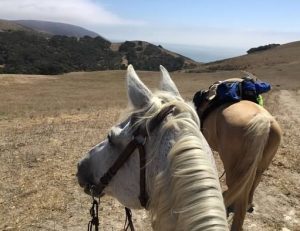
Beverly continued, “We were to check on all the runners and watch for any health concerns. If first aid was needed, one of us would stay with the runner and the other would go to an aid station to report location, runner bib number and condition.”
She added, “We talked about how to keep the horses settled in the event of separation. We agreed to pony the second horse to the aid station as to not create a separation and preserve the herd mentality.”
Steve Laputz, a SLO County resident and race participant, gives his perspective regarding equestrians providing race assistance, “From a racers view, the horseback riders were essentially monitoring the race, the racers and directing racers. They were another added ‘vehicle’ for support, monitoring and safety.”
Steve continued, “I’m sure from the race director’s stand point, it was beneficial as the equestrians could roam between the courses and not interfere with the actual race course.”
Race Action
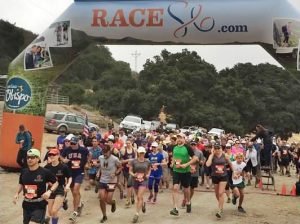 The 50-mile race began in the early morning hours of Saturday, September 10th. There was also a full marathon, a half marathon and a five mile race. Horseback riders arrived Friday night to camp in order to be ready for an early start on race day.
The 50-mile race began in the early morning hours of Saturday, September 10th. There was also a full marathon, a half marathon and a five mile race. Horseback riders arrived Friday night to camp in order to be ready for an early start on race day.
“We scheduled the riders who stayed overnight on Friday in four hour shifts with the first group going out before 8:00 am on Saturday. We also had one-day riders who trailered to the See Canyon/Prefumo Canyon intersection. They were mounted and going before 6:00 am on race day,” Kathy explained and added, “We didn’t have horseback riders out at dark yet there were runners out there until 9:00 pm Saturday.”
The beginning of the race gave Beverly her favorite memory as a volunteer, “Watching the pack of runners at the start run past the horses was exciting and electrifying. Hearing the sound of the runners’ feet on the dirt road and seeing the cloud of dust following them was energizing. The horses were alert and watching this new experience.”
Equestrians Out on Course
Water and feed for the horses was placed near the first aid stations. Kathy drove out on course with assistance from the 4×4 volunteers to place the water buckets during Friday’s race prep. “Next year I’ll put out even more horse water and we’ll plan for two access points and spread out more,” Kathy mentioned as she looks forward to next year’s event.
Beverly’s horse Journey, a Rocky Mountain Gaited horse, handled the activity of being on course quite well. “I have several riding horses and decided to take Journey because he is calm in traffic, new situations and does not mind standing. He was a champion on the course and handled every situation from the runners, to the bicyclists and the 4x4s. He also took care of himself eating and drinking when offered,” explained Beverly.
Runners, Bikers and Equestrians All Working Together
Both Kathy and Beverly emphasized how wonderful it was to work together with so many like-minded people. All used different modes of transportation all with the same goal of assisting the race runners. All appreciated seeing people being challenged physically, enjoying trails and views not usually open to exploration.
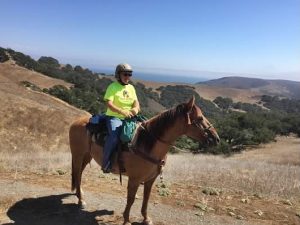
The SLO Ultra Race was unique in the fact that many different types of assistance was available. Search and rescue aid traveled in 4×4 vehicles (Jeep & Bronco), on bikes and in UTVs. The equestrians assisted their efforts.
Steve, who also participates in Adventure racing, appreciated the use of horseback riders which was new to him, “Horseback is easily a better source of transportation than a bike to monitor the race. If a racer is injured, the horseback rider can radio for additional services. If something goes really bad and a racer needs first aid and/or a way out, an equestrian is ideal to get there first especially in a very hard to reach area where a Jeep or UTV might struggle. Also, typically if a racer finds another racer that is injured, they will check in and notify at the next Aid Station. Horseback riders can backtrack on the roads to bring water or provide first-aid if needed while a Jeep or UTV was en route.”
SLO Ultra Race 2017 Plans
Do you want to be a part of next year’s race in some capacity? Plans are already in the works and volunteers are needed. Check out the SLO Ulra Race website. You’ll be inspired. Beverly leaves us with this encouragement, “Samantha Pruitt the SLO Ultra Coordinator is so well organized and has an energy she projects that is moving and commanding. She has vision in our community to healthy living and cares for each person who works, volunteers or runs in her race. I so enjoyed the experience!”
Photo credit: Kathy Redden, unless otherwise noted.
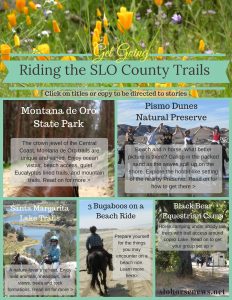 Get Going! Explore the wonder and beauty of the SLO County trails from the best place on earth, the back of a horse. To keep this info at your fingertips we have developed a FREE Hot Sheet that will direct you to these these stories. We’ll continue to add trail ride stories to our website. You can stay up-to-date by becoming a SLO Horse News herd member. Get your Riding the SLO County Trails Hot Sheet here >.
Get Going! Explore the wonder and beauty of the SLO County trails from the best place on earth, the back of a horse. To keep this info at your fingertips we have developed a FREE Hot Sheet that will direct you to these these stories. We’ll continue to add trail ride stories to our website. You can stay up-to-date by becoming a SLO Horse News herd member. Get your Riding the SLO County Trails Hot Sheet here >.

